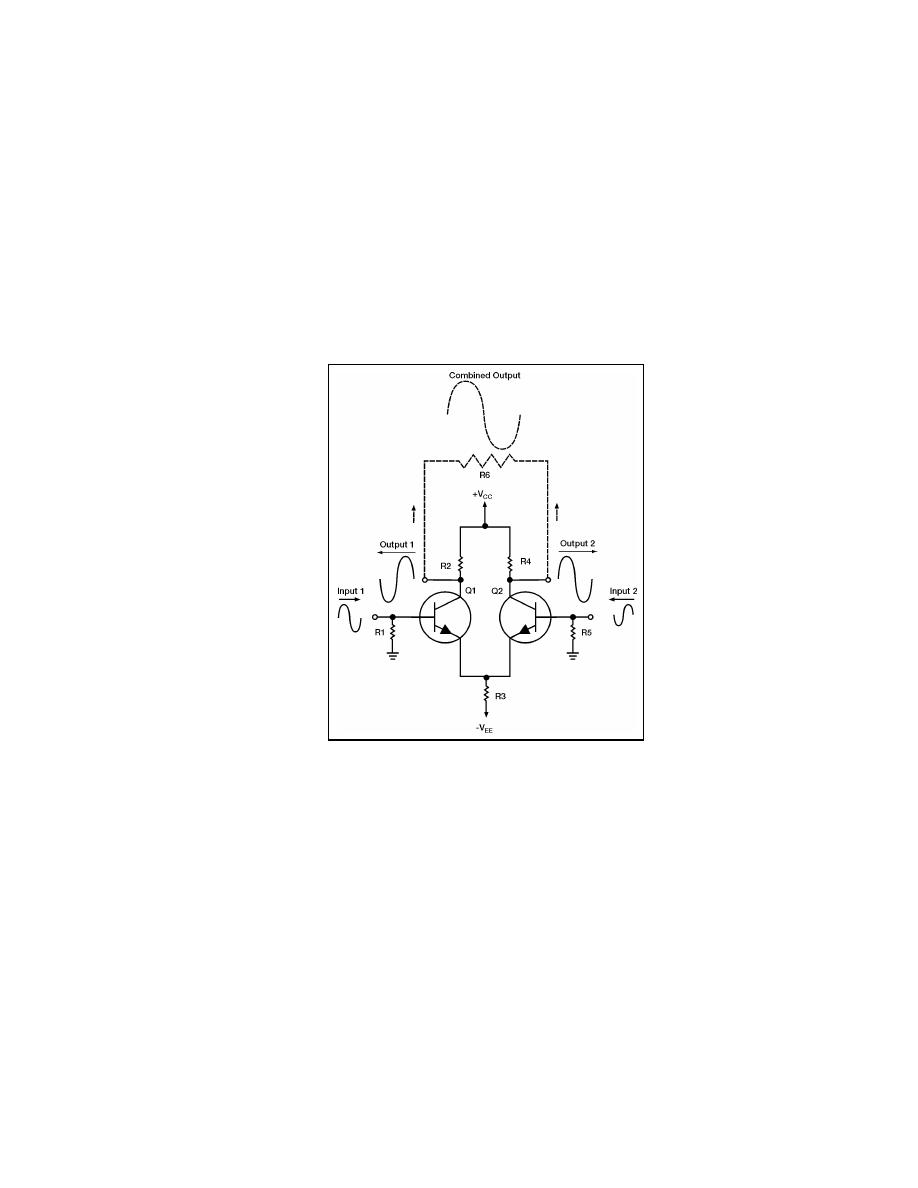
_____________________________________________________________________ Special Amplifiers
7-42. When an output signal is taken between the two output terminals of the amplifier
(as shown by the phantom connections, resistor, and signal), the combined output signal is
twice as great in amplitude as either signal at output number 1 or output number 2. This is
because output number 1 and output number 2 are 180 degrees out of phase with each
other. When the input signals are 180 degrees out of phase, the amplitude of the combined
output signal is equal to the amplitude of one input signal multiplied by two times the gain
of the amplifier.
7-43. When the input signals are not 180 degrees out of phase, the combined output
signal taken across output one and output two is similar to the output that you were shown
for the two-input, single-output, difference amplifier. The differential amplifier can have
two outputs (180 degrees out of phase with each other), or the outputs can be combined as
shown in Figure 7-9.
Figure 7-9. Differential-input, Differential-output Differential Amplifier
OPERATIONAL AMPLIFIERS
7-44. An operational amplifier is designed to be used with other circuit components to
perform either computing functions (addition and/or subtraction) or some type of transfer
operation (such as filtering). Operational amplifiers are usually high-gain amplifiers with
the amount of gain determined by feedback.
7-45. Operational amplifiers have been in use for some time. They were originally
developed for analog (non-digital) computers and used to perform mathematical functions.
Operational amplifiers were not often used in other devices because they were expensive
and more complicated than other circuits.
7-46. Today many devices use operational amplifiers. Operational amplifiers are used as
DC amplifiers, AC amplifiers, comparators, oscillators, filter circuits, and many other
applications. The reason for this widespread use of the operational amplifier is that it is a
very versatile and efficient device. As an IC (chip), the operational amplifier has become
23 June 2005
TC 9-62
7-13



 Previous Page
Previous Page
